Background
Menas C. Kafatos was born on March 25, 1945, in Crete, Greece. He had a brother, Fotis Kafatos, who was a biologist.

2017
Build Studio, New York City, United States
Menas Kafatos and Deepak Chopra appear to promote "You Are the Universe" during the BUILD Series at Build Studio on February 7, 2017, in New York City. Photo by Donna Ward
2017
Build Studio, New York City, United States
Menas C. Kafatos, Ph.D. attends Build Series Presents to discuss his new book "You Are the Universe" at Build Studio on February 7, 2017, in New York City. Photo by Laura Cavanaugh
2017
Build Studio, New York City, United States
Deepak Chopra and Menas Kafatos attend AOL Build Series at Build Studio on February 7, 2017, in New York City. Photo by Jenny Anderson
Ithaca, NY 14850, United States
In 1967 Menas C. Kafatos received a Bachelor of Arts degree from Cornell University.
77 Massachusetts Ave, Cambridge, MA 02139, United States
In 1972 Menas C. Kafatos obtained a Master of Arts degree from the Massachusetts Institute of Technology.
Menas C. Kafatos and wife Dr. Susan Yang pose with his IEEE-OC Distinguished Leadership Award.









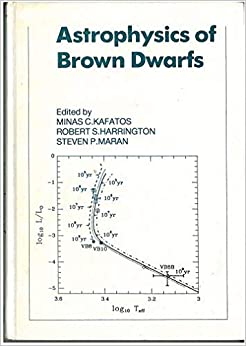
(The recent discovery of a dark companion object orbiting ...)
The recent discovery of a dark companion object orbiting the star VB8 has transformed our knowledge and understanding of low-mass stellar companions. This book reviews present observational and theoretical knowledge of Brown Dwarfs. These objects bridge the range of masses between conventional planets and normal stars. The book is based on papers presented at a recent workshop, held at George Mason University, and devoted to Brown Dwarfs, Fourteen papers are concerned with various search techniques and the results so far; a further dozen contributions consider the theoretical aspects. As an aid to the reader, there are excellent indexes which enable any mention of a particular celestial object to be located quickly. It is anticipated that sub-stellar mass objects will be directly detectable with the Hubble Space Telescope. This survey volume is therefore a timely summary of our knowledge prior to the launch of the telescope.
https://www.amazon.com/Astrophysics-Brown-Dwarfs-Minas-Kafatos/dp/0521323371/ref=sr_1_2?dchild=1&keywords=Astrophysics+of+Brown+Dwarfs&qid=1588581202&s=books&sr=1-2
1986
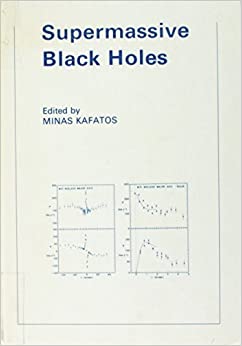
(This volume is based on the Third George Mason University...)
This volume is based on the Third George Mason University Workshop in Astrophysics. A group of experts discusses our present understanding of supermassive black holes, which may be the energy source of quasars and active galactic nuclei.
https://www.amazon.com/Supermassive-Black-Holes-Minas-Kafatos/dp/0521342465/ref=sr_1_2?dchild=1&keywords=Supermassive+Black+Hole+Kafatos&qid=1588582115&s=books&sr=1-2
1988
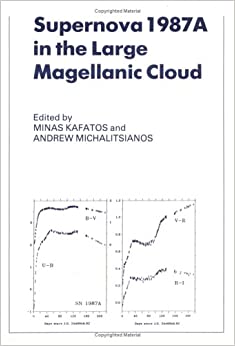
(The brightest supernova explosion since the invention of ...)
The brightest supernova explosion since the invention of the telescope has led to a corresponding explosion in research activity. This volume presents the papers from the Fourth George Mason University Workshop, held in the fall of 1987. There are numerous descriptions of the latest observations of this supernova and of the implications for theory. The book is an essential reference for all professional astronomers in stellar and galactic research who need the latest information on this fascinating phenomenon.
https://www.amazon.com/Supernova-1987A-Large-Magellanic-Cloud/dp/0521355753/ref=sr_1_fkmr0_2?dchild=1&keywords=Supernova+I987A+in+the+Large+Magellanic+Cloud+Kafatos&qid=1588582186&s=books&sr=1-2-fkmr0
1988
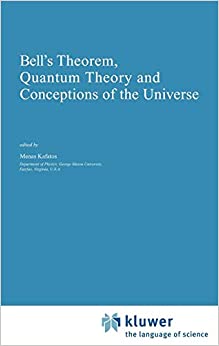
(Bell's Theorem and its associated implications for the na...)
Bell's Theorem and its associated implications for the nature of the physical world remain topics of great interest. For this reason many meetings have been recently held on the interpretation of quantum theory and the implications of Bell's Theorem. Generally these meetings have been held primarily for quantum physicists and philosophers of science who have been or are actively working on the topic. Nevertheless, other philosophers of science, mathematicians, engineers as well as members of the general public have increasingly taken interest in Bell's Theorem and its implications. The Fall Workshop held at George Mason University on October 21 and 22, 1988 and titled "Bell's Theorem, Quantum Theory and Conceptions of the Universe" was of a more general scope. Not only it attracted experts in the field, it also covered other topics such as the implications of quantum non-locality for the nature of consciousness, cosmology, the anthropic principle, etc. topics usually not covered in previous meetings of this kind. The meeting was attended by more than one hundred ten specialists and other interested people from all over the world. The purpose of the meeting was not to provide a definitive answer to the general questions raised by Bell's Theorem. It is likely that the debate will go on for quite a long time. Rather, it was meant to contribute to the important dialogue between different disciplines.
https://www.amazon.com/Theorem-Conceptions-Universe-Fundamental-Theories/dp/0792304969/ref=sr_1_1?dchild=1&keywords=Bell%E2%80%99s+Theorem%2C+Quantum+Theory%2C+and+Conceptions+of+the+Universe+Kafatos&qid=1588582406&s=books&sr=1-1
1989
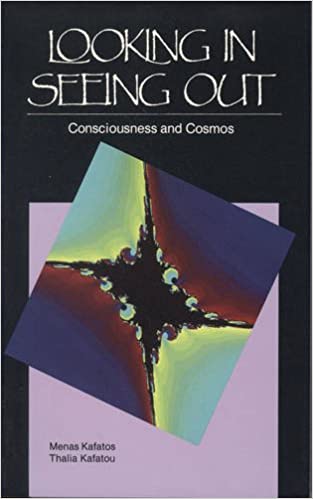
(Most books on science and mysticism attempt to link moder...)
Most books on science and mysticism attempt to link modern physics to philosophic views of consciousness. This book explores the two as parallel processes-one outer, one inner. Our outward search is for objective reality - "out there" in the world. But what we experience as outer is linked to what we can know in ourselves subjectively. The inward search is for that level of consciousness that underlies all subjective experience, spoken of by the mystics. Like other recent others, Drs. Kafatos and Karatou find parallels between Eastern thought and recent scientific developments in quantum theory and cosmology. But they go farther and hold that the realms of consciousness and the objective world are complementary aspect of the same reality. Their approach is fresh and unique and shows how we are involved in the cosmic process.
https://www.amazon.com/Looking-Seeing-Out-Consciousness-Cosmos/dp/0835606740/ref=sr_1_1?dchild=1&keywords=Looking+in%2C+Seeing+Out%3A+Consciousness+and+Cosmos+Kafatos&qid=1588582740&s=books&sr=1-1
1991
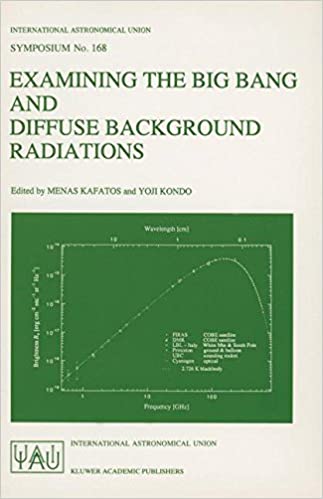
(IAU Symposium No. 168, Examining the Big Bang and Diffuse...)
IAU Symposium No. 168, Examining the Big Bang and Diffuse Background Radiations, took place on August 23-26, 1994 at the XXIInd IAU General Assembly in the Hague, Netherlands. The meeting attracted a large number - over 250 - of astronomers, reflecting the strong interest engendered by the great advances in cosmology made in recent years. There is still a multitude of unresolved problems in modern cosmology and the symposium offered a wonderful occasion to examine them objectively, at a place where many leading workers in related fields gathered together. After the introduction by IAU President L. Woltjer and the historical background by Vice Present Virginia Trimble, the volume begins with reviews of the cosmic microwave radiation from COBE (Cosmic Background Explorer). Reviews of recent observations then extend from radio to infrared, visible light, ultraviolet, X-rays and gamma-rays. It is followed by theoretical models for the Big Bang and Inflation, and alternative views to the Big Bang. Following a discourse on Probes and Future Tests, the meeting ended with a Panel Discussion on `Major Unsolved Problems of Cosmology'. Some forty-four contributed papers - both oral and poster reports - are included after the invited talks and panel discussions.
https://www.amazon.com/Examining-Background-Radiations-International-Astronomical/dp/0792338146/ref=sr_1_1?dchild=1&keywords=Examining+the+Big+Bang+and+Diffuse+Background+Radiations+Kafatos&qid=1588582954&s=books&sr=1-1
1996
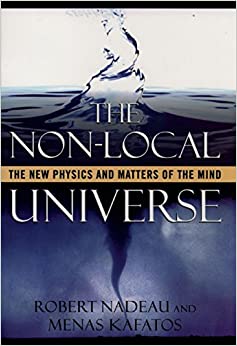
(In The Non-Local Universe, Nadeau and Kafatos offer a rev...)
In The Non-Local Universe, Nadeau and Kafatos offer a revolutionary look at the breathtaking implications of non-locality. They argue that since every particle in the universe has been "entangled" with other particles like the two photons in the 1997 experiments, physical reality on the most basic level is an undivided wholeness. In addition to demonstrating that physical processes are vastly interdependent and interactive, they also show that more complex systems in both physics and biology display emergent properties and/or behaviors that cannot be explained in the terms of the sum of parts.
https://www.amazon.com/Non-Local-Universe-Physics-Matters-Mind-ebook/dp/B00VOLCA98/ref=sr_1_1?dchild=1&keywords=The+Non-Local+Universe%3A+The+New+Physics+and+Matters+of+the+Mind+Kafatos&qid=1588583183&s=books&sr=1-1
1999
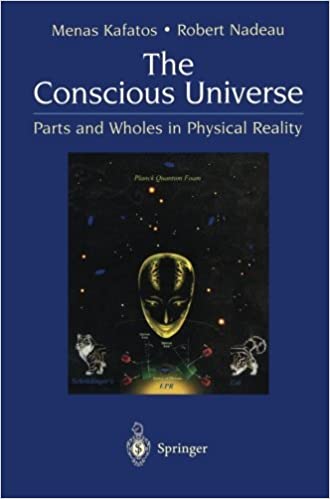
(A discussion of the implications for philosophy of recent...)
A discussion of the implications for philosophy of recent experimental results that confirm some counterintuitive aspects of the way matter behaves. The authors show that a generalised principle of complementarity is pervasive not only in physical theories such as cosmological models of the universe, but also in the construction of all human realities. They discuss in detail Bells inequalities for quantum mechanical measurements as well as recent experiments which imply that even remote parts of the universe are "entangled." They go on to suggest that consciousness can no longer be divorced from the way science operates, and conclude by claiming that this entails a new way of understanding the universe - one that could obviate much of the current conflict between science and religion while providing at the same time a basis for valuation that is better suited for co-ordinating all human experience. This second edition has been completely rewritten and brought up to date.
https://www.amazon.com/Conscious-Universe-Wholes-Physical-Reality-ebook/dp/B000PY3R9W/ref=sr_1_2?dchild=1&keywords=The+Conscious+Universe%3A+Part+and+Whole+in+Modern+Physical+Theory+Kafatos&qid=1588582497&s=books&sr=1-2
2000
Μηνάς Καφάτος
educator physicist scientist author
Menas C. Kafatos was born on March 25, 1945, in Crete, Greece. He had a brother, Fotis Kafatos, who was a biologist.
In 1967 Menas C. Kafatos received a Bachelor of Arts degree from Cornell University. In 1972 he obtained a Master of Arts degree from the Massachusetts Institute of Technology.
From 1972 to 1973 Menas C. Kafatos was a postdoctoral research associate at the University of Colorado, Boulder. From 1974 to 1975 he served as a postdoctoral fellow of the National Research Council at the National Aeronautics and Space Administration, Goddard Space Flight Center. From 1975 to 1979 he worked as an assistant professor at George Mason University, an associate professor from 1979 to 1984, a university professor of interdisciplinary science from 1984 to 2008, and was a founding director for science of the Institute for Computational Sciences and Informatics at Center for Earth Observing and Space Research from 1991 to 1994.
He is the Founding Dean of the Schmid College of Science and Technology at Chapman University, serving as dean from 2009 to 2012. Since 2010 Kafatos has been the Fletcher Jones Endowed Chair Professor of Computational Physics at Chapman University. Since 2012 he has been a director of the Center of Excellence in Earth Systems Modeling and Observations.
He has published numerous books including The Conscious Universe, The Non-local Universe (with Robert Nadeau), Principles of Integrative Science (with Mihai Draganescu), and more than 250 articles in computational science, astrophysics, etc.
(The recent discovery of a dark companion object orbiting ...)
1986(A discussion of the implications for philosophy of recent...)
2000(The brightest supernova explosion since the invention of ...)
1988(In The Non-Local Universe, Nadeau and Kafatos offer a rev...)
1999(Bell's Theorem and its associated implications for the na...)
1989(Most books on science and mysticism attempt to link moder...)
1991(This volume is based on the Third George Mason University...)
1988(IAU Symposium No. 168, Examining the Big Bang and Diffuse...)
1996Menas C. Kafatos answered in the interview on the question "What is the difference between your observer-based science and the current object-based science?" as "Today, we assume that everything is external, that reality is external and that objects are external to us. But actually, this is an assumption on our part. It’s actually a mythological statement, a philosophical cliff. You may say it’s obvious. I mean, if you look, everything is outside of us. But neuroscience shows that those perceptions might not be right, and in some ways the way we perceive the world is not from the out in, but perhaps the other way, that we project out from what I may call the inner world. Whether one or the other is correct, there’s no such thing as a self-evident truth."
Kafatos also told, "I believe that the dialogue between science and spirituality is paramount for the evolution of humanity and assuring that we, as a species, survive." He was influenced by Niels Bohr, John von Neumann, Philip Morrison, Mihai Draganescu.
Menas C. Kafatos is a member of the International Astronomical Union, the American Astronomical Society, the American Physical Society, the American Geophysical Union, the Royal Astronomical Society, the Hellenic Astronomical Society. In February 2018 he was elected Foreign Member of the Korean Academy of Science and Technology.
Menas C. Kafatos is married to Susan Yang. They have three children: Lefteris, Stefanos, and Alexios.
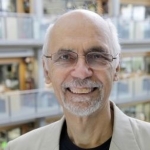
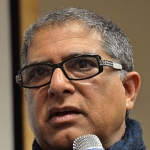
Deepak Chopra joins forces with leading physicist Menas Kafatos to explore some of the most important and baffling questions about our place in the world in the book You Are The Universe.
